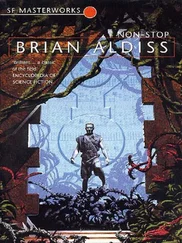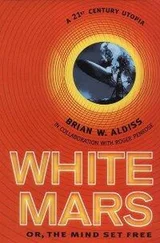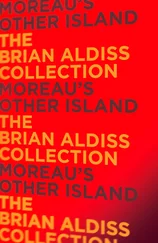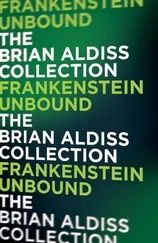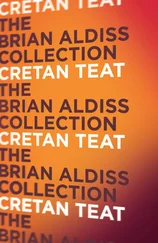‘So I suppose your Christina went to live in a nunnery …’
‘Where else would she have gone for safety in those days? Or now?’
Silence fell between the two men. Then Simpson said. ‘At least we treat women better now.’
He felt he had scored a point there.
Operation Horizon delivered a positive report to the executive council of the United Universities. Subterranean channels had been charted, and a reservoir containing plentiful H 2O of unknown quality. A map of the area on the Tharsis Shield accompanied their report, with waterways depicted like blue veins.
It was the verdict of the two hydrologists making the report that this area would be a suitable site for the settlement to be established, at least as far as water supply was concerned.
This report provided the necessary impetus for the development of this great and unprecedented enterprise – the colonisation of Mars.
A surveyor by name Moses Barrin was immediately hired to draw up sites for proposed Martian settlements known as towers. His instructions were to demarcate a site where six small habitations could be established. He used maps created from data from both Operation Horizon and even the now ancient NASA vehicle Curiosity . Barrin was to be among the first humans sent to colonize Mars.
The Message , newspaper of the Vatican, warned of the moral dangers of venturing onto a planet where Jesus Christ had never trod.
Several screamers showed cartoons of Jesus wandering alone, asking, ‘Where’s someone to save?’
4 Table of Contents Title Page BRIAN ALDISS Finches of Mars Dedication For my grandsons in the future Laurence and Thomas (Thomas who was the first person to read this discourse) And to Jason and Max and Ben and of course Archie with my love. Epigraph He who can read Sir Charles Lyell’s grand work on the Principles of Geology , which the future historian will recognise as having produced a revolution in natural science, and yet does not admit how vast have been the past periods of time, may at once close this volume. – Charles Darwin, On the Origin of Species by Means of Natural Selection, or, the Preservation of Favoured Races in the Struggle for Life 1. An Oceanless World 2. A Freedom 3. Mangalian’s Remark 4. Final Journey 5. The Shape of the UU 6. Mangalian Among the Ladybirds 7. The Care of a Child 8. The Death of a Hero 9. Life Elsewhere? 10. The Inevitable Happens 11. A Belated Announcement 12. Mulling Over Required 13. Some False Dispositions 14. The Mad Horse & Ooma’s Sad Poem 15. An Hour’s Friendship 16. Shap’s Lecture 17. Interlude: A Farewell To Families 18. Interlude Part II: A Long Journey and A Short Walk 19. The Vexed Question of Umwelts 20. A Troubled Exwo 21. Images of the Past 22. Phipp has Problems to Share 23. The Four Birds 24. Consolations of Knowledge and Sex 25. Meeting an Astronomer 26. Life on Mars! The Capture of Things 27. Hitting the Trail 28. Some Problem for Mangalian 29. Questions of Evolution 30. Precious Discoveries 31. Visitors 32. Descendants from the Present 33. Reception in the China Tower 34. A Great Resource Footnotes Appendix By the same author from The Friday Project Copyright About the Publisher
Final Journey Table of Contents Title Page BRIAN ALDISS Finches of Mars Dedication For my grandsons in the future Laurence and Thomas (Thomas who was the first person to read this discourse) And to Jason and Max and Ben and of course Archie with my love. Epigraph He who can read Sir Charles Lyell’s grand work on the Principles of Geology , which the future historian will recognise as having produced a revolution in natural science, and yet does not admit how vast have been the past periods of time, may at once close this volume. – Charles Darwin, On the Origin of Species by Means of Natural Selection, or, the Preservation of Favoured Races in the Struggle for Life 1. An Oceanless World 2. A Freedom 3. Mangalian’s Remark 4. Final Journey 5. The Shape of the UU 6. Mangalian Among the Ladybirds 7. The Care of a Child 8. The Death of a Hero 9. Life Elsewhere? 10. The Inevitable Happens 11. A Belated Announcement 12. Mulling Over Required 13. Some False Dispositions 14. The Mad Horse & Ooma’s Sad Poem 15. An Hour’s Friendship 16. Shap’s Lecture 17. Interlude: A Farewell To Families 18. Interlude Part II: A Long Journey and A Short Walk 19. The Vexed Question of Umwelts 20. A Troubled Exwo 21. Images of the Past 22. Phipp has Problems to Share 23. The Four Birds 24. Consolations of Knowledge and Sex 25. Meeting an Astronomer 26. Life on Mars! The Capture of Things 27. Hitting the Trail 28. Some Problem for Mangalian 29. Questions of Evolution 30. Precious Discoveries 31. Visitors 32. Descendants from the Present 33. Reception in the China Tower 34. A Great Resource Footnotes Appendix By the same author from The Friday Project Copyright About the Publisher
The report of Martian water running underground did much to excite public interest in the project, and to stir the involvement of the universities. There was less talk of trips to Mars being ‘madness’. In Chinese cities new factories were manufacturing ‘space planes’.
The United Universities, from the original three, had expanded to thirty-one signatories, consisting mainly of universities or departments of universities situated in the United States of America, Britain, Europe and China. Other universities were drawn in as by a magnet, tempted in the main by the two hydrologists’ positive report on Tharsis.
Soon there existed a world-wide body of growing strength and ubiquity which stood in defiance of what the British Foreign Minister had described as ‘the New Dark Ages of Technofrolic’. After renewed Beijing scrutiny, the charter was revised with fresh restrictions: In addition to the ban on any proposed traveller to Mars with a known religious background, there were to be no travellers above forty-five years old (with certain rare exceptions). Signing members guaranteed to supply regular six-monthly contributions to a central fund. In exchange, signatories were entitled to receive directly any fresh scientific discoveries from Mars.
The news of the hydrologists’ discovery had travelled faster than their ship. The names of Simpson and Prestwick were already forgotten by the media by the time the automatic call sign on their tiny returning ship sounded at Luna Lookout. Luna signalled the vessel to come in.
No reply was received.
An emergency ship was sent up. This space plane had been manufactured in nine days in the city of Chenggong, an urban development of forty-nine million people.
The Aquabatic , with its freight of the two hydrologists, was gaining speed, heading towards the Sun. The rescuers locked on to its hull, sending a sequence of calls to those within. They went unanswered.
A request for instruction was sent to Lookout. Lookout signalled Chicago-Emergency. Chicago advised immediate entry of ship by men in emergency equipment.
A hole was cut in the Aquabatic ’s hull and a man by the name of Will Donovan, suitably masked, forced his way in. There he found the bodies of the two hydrologists lying in the cramped living quarters, Prestwick on his bunk, Simpson sprawled face-down on the floor. Both men had been dead for several weeks.
A discolouring heliotrope showed on their skins and faces. An argument was conducted between ship and ground station; the bodies ought to be left where they were, to make their final journey into the Sun undisturbed – the public must not be alarmed by these unanticipated deaths. Alternatively, the bodies should be encapsulated and brought to Hospital Luna under conditions of secrecy, for research purposes.
This was the view that won the day. The corpses were transferred to the rescue ship. Remaining behind to be forever lost were recordings of their vellicative memories. The Aquabatic was left to drift on its course towards the Sun.
Читать дальше

